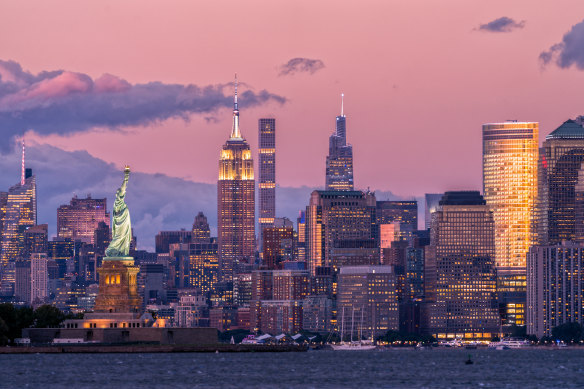This was published 6 months ago
Opinion
This is what good financial planning really looks like
Paul Benson
Money contributorI’ve just spent the past two months living and working in New York.
For at least the last 20 years, one of the first things I do each morning is check what’s happened on the US stock markets overnight. For someone with a keen interest in investments and financial markets, New York is the centre of the universe.

You might ask what a two-month sojourn in New York has to do with personal finance, but good planning goes well beyond just the numbers.Credit: Getty
My wife and I have always enjoyed travel. Many years ago we tossed around ideas to experience a place by living there, rather than simply visiting and snapping the required photos. And so it was that as our plans for adventure coalesced, New York became destination number one.
During our stay we saw Broadway musicals, beautiful art deco architecture, art of all varieties, ate lots of wonderful food, walked for miles and miles, and met some fantastic people.
We both continued to work, with some timetabling yoga required to accommodate time zone differences. We rented space in a co-working office a few doors down from where we were staying, surrounding ourselves with the energy of people working on various startups and interesting projects. With so many people to talk to, the co-working experience was certainly a very successful element of our New York adventure.
Living for two months on the other side of the world is not typical. We got many questions, both whilst in the US, and from those back home. We explained to those interested that with our youngest child having finished high school last year, we felt it was time for us to have an adventure, and two months in New York was it.
Too often I’ve found people assume that the only valid path is to grind away, head down bum up, until the point where retirement becomes possible
Whilst this was true, it really didn’t do justice to the full story. The reality is Jess and I have worked towards this goal for the best part of a decade.
It shaped her decision to become self-employed. It drove decisions in my financial planning business in areas such as the early adoption of Zoom meetings, and ensuring all our systems were cloud-based. We couldn’t have known that COVID-19 was a challenge we would one day face, but fortuitously these initiatives had an unexpected early payoff.
Because we worked throughout the trip, the financial impact was not that of a two-month holiday. Nevertheless, there were airfares and accommodation to be paid, on top of which New York is an expensive place to live.
Like so many of my clients, we had a holiday account into which we contributed regularly in the lead up, to ensure these expenses could be met without going into the red.
Money spent on adventure is money that can’t be used to top up your super, or make other investments. This trip is not a “once and done” experience. Our intention is to repeat this exercise, living in a different place for two months each year, for as long as it makes us happy.
So we had to consider the impact this would have on our long term financial position, and ultimate retirement. We discussed at what age we would like to retire, what we’d like to do in retirement, and how much income we’d need to do it.
I then conducted financial modelling, the same as we do for almost all of our financial planning clients, to test that this adventurous plan of ours was indeed affordable, and we wouldn’t have regrets later in life.
Neither of us sought early retirement, both enjoying what we do professionally. This was definitely helpful in making our plans possible. Our broader life plan therefore became one of enjoying the journey rather than keeping the nose to the grindstone for the minimum amount of time possible, and then enjoying freedom upon retirement.
This latter approach is certainly valid for many, and not a glide path I would in any way criticise. Too often though I’ve found in my career people just assume that the only valid path is to grind away, head down bum up, until the point where retirement becomes possible, and then permit themselves the luxury of extended travel and enjoying the fruits of all their hard work.
It’s a privilege of my job that I get to see a wide variety of different life trajectories. These insights certainly helped inform the conversations that Jess and I had, which ultimately led to the New York adventure we’ve just enjoyed.
Living and working overseas for a couple of months every year is not for everyone. Indeed, for most people, it simply would not be viable given the requirements of their employment. The point of this piece is not to encourage you to choose this particular path. Far from it. It’s just what suited us. Instead, I’ve written this piece to illustrate what good financial planning actually is.
Successful financial planning is not about accumulating the most wealth possible. It’s not stressing over earning an extra half a per cent on your savings. And it’s not about finding inventive ways to avoid paying tax.
Good financial planning is about determining goals and priorities, developing strategies that provide the greatest certainty for achieving of those goals, and then executing on the plan, with plenty of course corrections along the way.
Paul Benson is a Certified Financial Planner, and writes the Ask an Expert column each Sunday in Money.
Expert tips on how to save, invest and make the most of your money delivered to your inbox every Sunday. Sign up for our Real Money newsletter.